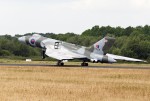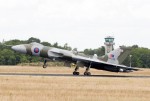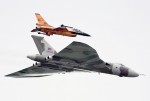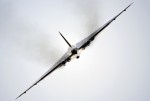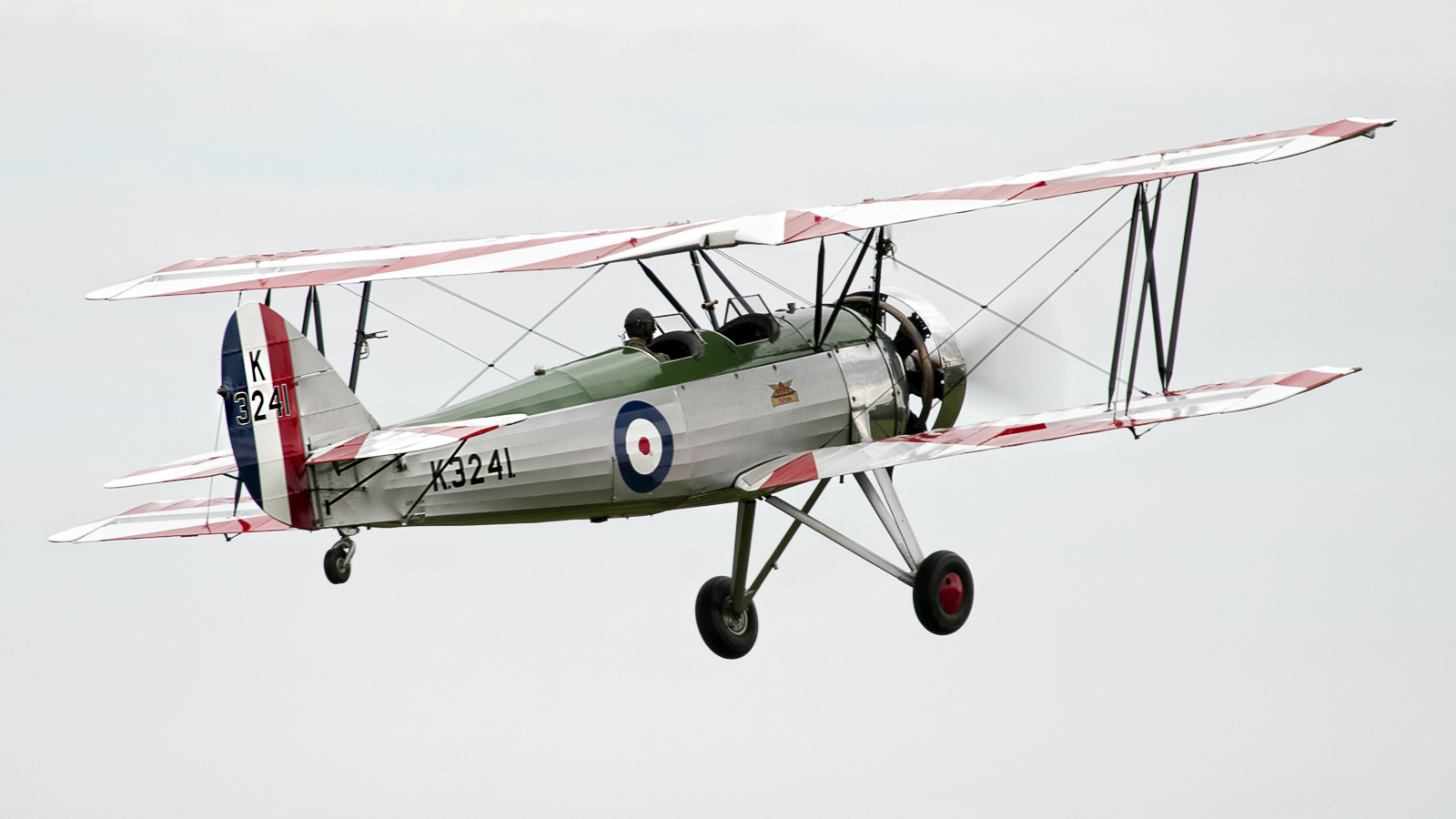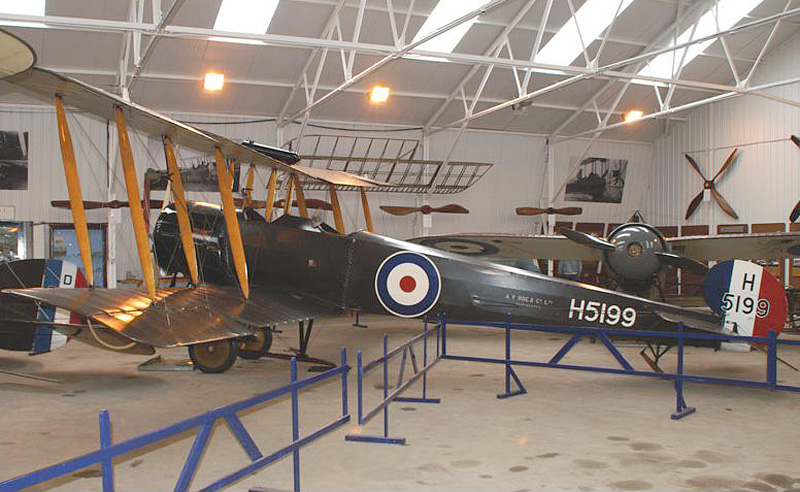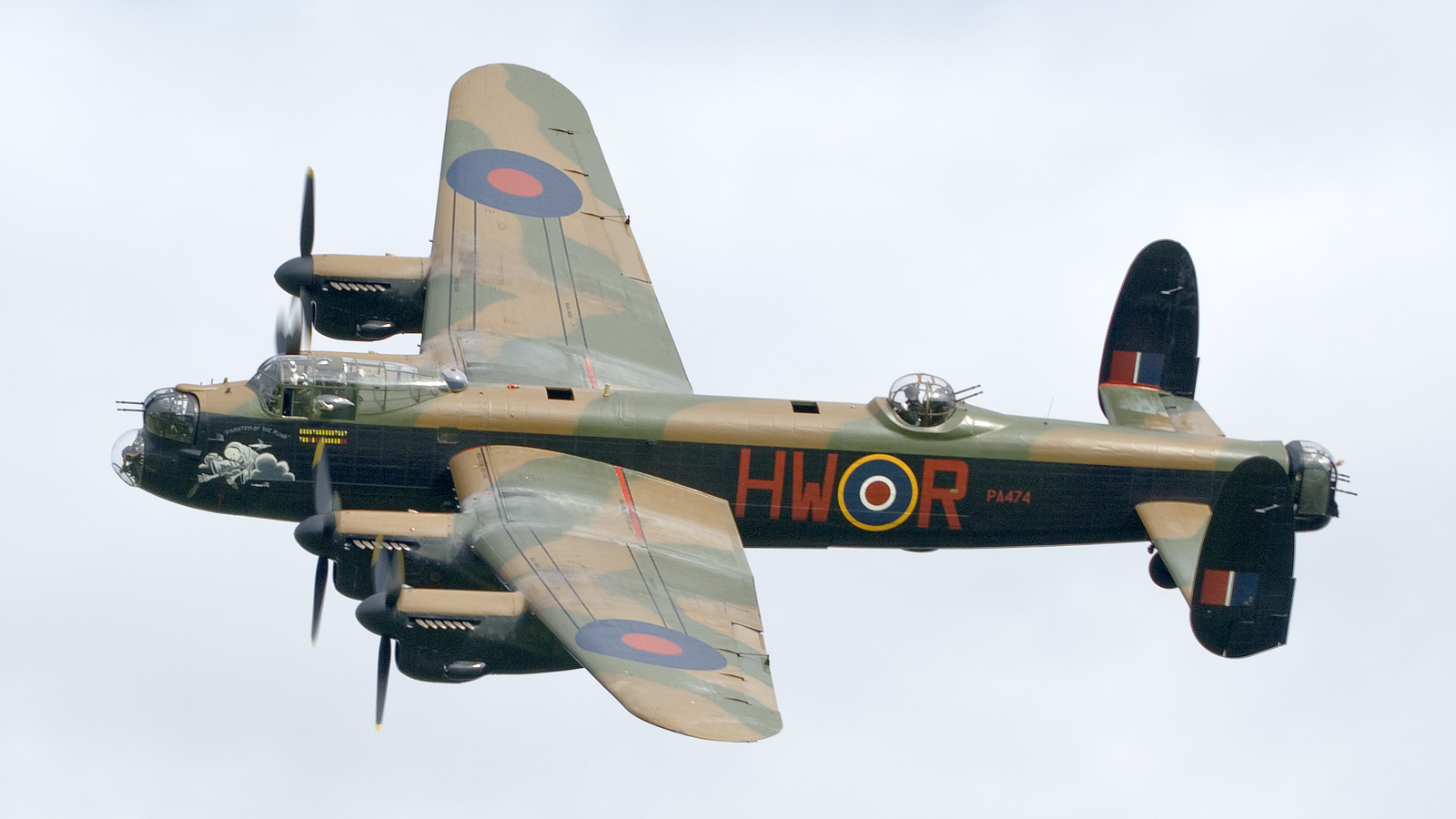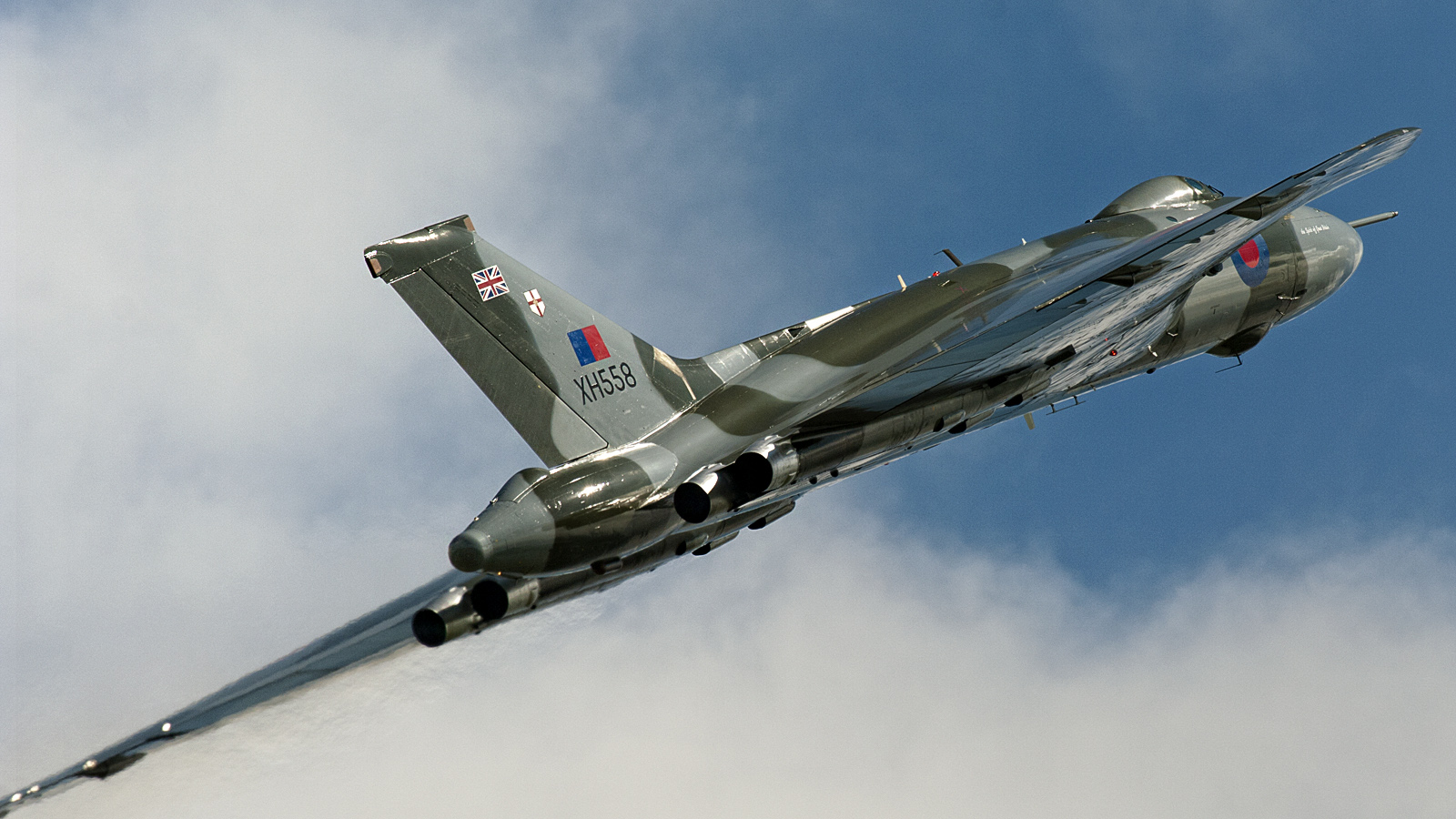
One of the British V-bombers the Avro Vulcan a jet-powered delta wing strategic bomber, was operated by the Royal Air Force (RAF) from 1956 until 1984. During the dark days of the Cold War, the Avro Vulcan was the main British contribution to the NATO strategic nuclear deterrent.
Developing nation: United Kingdom
Manufacturer/designer: Avro.
Production line: Woodford Aerodrome.
Type aircraft: Jet-powered delta wing strategic bomber.
First flight: 30 August 1952 VX770.
Delivering to RAF: First June 1955, the last being delivered to the RAF in January 1965.
Retired: March 1984.
Built: 136 (including prototypes).
The first Type 698 prototype (VX770) took to the air for its maiden flight on 30 August 1952. Development of the intended Bristol Olympus engines was running behind schedule at the time, and so the first aircraft was fitted with four 6,500 lb (2,948 kg) thrust Rolls-Royce Avon R.A.3s. A year later the Avons were replaced by 7,500 lb (3,402 kg) thrust Armstrong Siddeley Sapphire A.S.Sa.6s. The Olympus Mk 100 engine of 9,750 lb (4,423 kg) thrust was first installed on the second prototype (VX777), which was initially flown on 3 September 1953.
The Vulcan B. Mk 1 had been designed to deliver a free-fall nuclear bomb (initially Blue Danube and later Yellow Sun) from high altitude, advances in air defence technology were expected to make this approach far too hazardous. Accordingly, the B. Mk 2 was designed to be the launch platform for a new generation of ‘stand off’ nuclear weapons. The first of these was the Avro designed Blue Steel, a rocket-powered supersonic cruise missile with a nuclear warhead, which could be launched 100 miles from the target. Only 57 Blue Steels were produced, and Vulcans equipped to carry it were designated B. Mk 2A. The first such aircraft was delivered in September 1961.
Falkland Islands
The only time the Vulcan was used in anger was during the South Atlantic Conflict in 1982, when Vulcans, each supported by 13 Victor air-to-air refuelling tankers, flew 7 missions from Ascension Island to the Falkland Islands. The 1st “Black Buck” sortie, with the Vulcan armed with twenty-one 450kg conventional bombs, placed one bomb in the centre of the runway at Port Stanley airfield, proving its vulnerability and causing the Argentine invaders to change their plans. These raids captured the world record at the time for the longest-ever bombing mission: a return journey of nearly 8000 miles (12,500km), taking 15 hrs 45 mins.
XH558
Vulcan to the Sky Trust, the charity that operates the last flying Vulcan bomber XH558 announced that 2013 will mark the final flying season of one of the worlds most remarkable airshow acts….go see that mighty Vulcan! The Vulcan to the Sky Trust, which has kept the bomber in the skies for six years, said it needed in excess of £1m to carry out repairs and maintenance in coming months.
G-VLCN / XH558 (cn SET12) XH558 was the twelfth in 1960 manufactured Vulcan B2, since 1 July 1960 delivered to No. 230 Operational Conversion Unit at RAF Waddington. Almost immediately was together with his unit relocated to RAF Finningley, there operated 8 years before returning in 1968. In 1973 was converted to B2 Maritime Radar Reconnaissance version and in 1982 to the air-to-air refuelling variant K2. In 1985 was the last Vulcan in service and from 1986 to 1992 was the RAF’s display aircraft.
It was restored at Bruntingthorpe in Leicestershire with the majority of the funding coming from public donations and the Heritage Lottery Fund. The first post-restoration flight, which lasted 34 minutes, took place on 18 October 2007
Variants
| first prototype | One aircraft with Avon engines. Later successively fitted with Sapphire, Olympus 102, Olympus 104 and Conway engines. |
| second prototype | One aircraft, much closer to production standard. Olympus 100 engines intially. Later flight tested Olympus 101/102/104 engines and new wing for B. Mk 2. |
| Vulcan B. Mk 1 | Initial production version. Olympus 101/102/104 engines. |
| Vulcan B. Mk 1A | Conversion of B. Mk 1 with ECM equipment in enlarged tailcone. |
| Vulcan B. Mk 2 | Improved production version with larger, thinner, wing and uprated Olympus 201 or 301 engines. Later fitted with Terrain Following Radar in nose pimple and ARI.18228 passive radar warning system on top of fin. |
| Vulcan B. Mk 2A | B. Mk 2 converted to carry Blue Steel missile. Olympus 301 engines. Reverted back to B. Mk 2 standard when Blue Steel withdrawn. |
| Vulcan B. Mk 2BS | Alternative designation for B. Mk 2A. |
| Vulcan B. Mk 2(MRR) | 9 conversions of B. Mk 2 for Maritime Radar Reconnaissance role. |
| Vulcan K. Mk 2 | 6 conversions of B. Mk 2 for air-refuelling tanker role, with single hose-drum unit under rear fuselage. |
| Stage 6 Vulcan | Projected version of B. Mk 2 designed to carry six Skybolt missiles. Olympus 23 engines and new bigger wing. |
| Avro Type 700 Atlantic | Projected airliner version using Vulcan wing and longer wider fuselage to carry passengers. |
Avro Vulcan B.1
General characteristics
- Crew: 5 (pilot, co-pilot, AEO, Navigator Radar, Navigator Plotter)
- Length: 29.59 m (97 ft 1 in)
- Wingspan: 30.3 m (99 ft 5 in)
- Height: 8.0 m (26 ft 6 in)
- Wing area: 330.2 m² (3,554 ft²)
- Empty weight: 37,144 kg (83,573 lb) (including crew)
- Max. takeoff weight: 77,111 kg (170,000 lb)
- Powerplant: 4 × Bristol Olympus 101, or 102 or 104 turbojet, 11,000 lbf (49 kN) each
Performance
- Maximum speed: 1038.03km/h (Mach 0.96) (645 mph )) at altitude
- Cruise speed: 912 km/h (Mach 0.86) (567 miles per hour)) at 45,000 ft
- Range: 4,171 km (2,607 mi)
- Service ceiling: 17,000 m (55,000 ft)
- Thrust/weight: 0.31
Armament
- 21 x 1,000 pounds (454 kg) of conventional bombs
- 1 x Blue Danube nuclear gravity bomb
- 1 x Violet Club 400 kT nuclear gravity bomb
- 1 x U.S. Mark 5 nuclear gravity bomb supplied under Project E
- 1 x Yellow Sun Mk.1 400 kT nuclear gravity bomb
- 1 x Yellow Sun Mk 2 1.1 MT thermonuclear gravity bomb
- 1 x Red Beard nuclear gravity bomb
All pictures courtesy of Zijde Aviation Photo and Publishing, Rob Vogelaar and Marcel van Leeuwen



